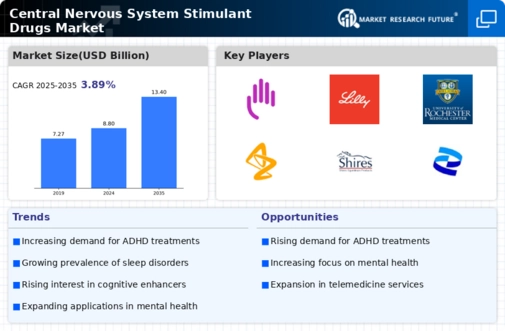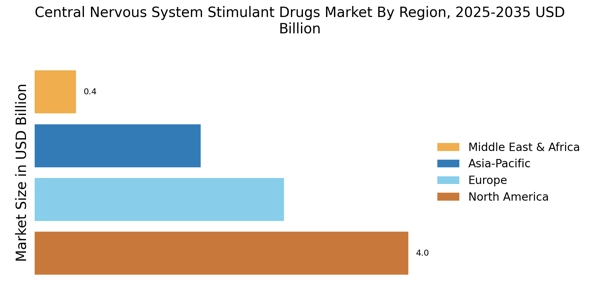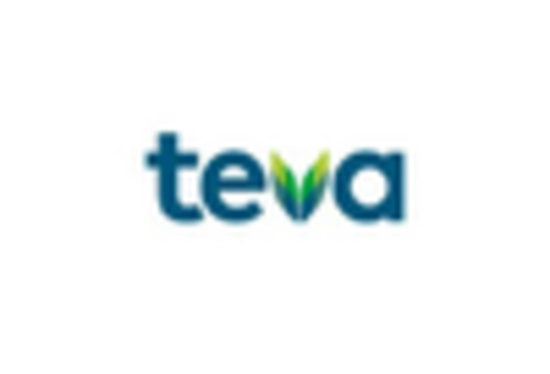Rising Utilization of Telehealth Services
The rising utilization of telehealth services is emerging as a significant driver for the Central Nervous System Stimulant Drugs Market. The convenience and accessibility of telemedicine have transformed how patients seek treatment for conditions like ADHD. Patients can now consult healthcare providers remotely, which may lead to increased diagnosis and treatment rates. This shift is particularly beneficial for individuals in underserved areas who may have limited access to traditional healthcare facilities. As telehealth continues to gain traction, it is likely to facilitate more frequent prescriptions of stimulant medications, thereby expanding the market. The integration of telehealth into routine care is expected to enhance patient engagement and adherence to treatment plans, further driving demand for stimulant drugs.
Growing Acceptance of Stimulant Medications
The growing acceptance of stimulant medications among healthcare providers and patients is a notable driver for the Central Nervous System Stimulant Drugs Market. Historically, there has been a stigma associated with the use of stimulant drugs, often due to misconceptions about their safety and efficacy. However, recent studies have demonstrated the benefits of these medications in managing ADHD and other conditions, leading to a shift in perception. As more healthcare professionals advocate for the use of stimulants based on clinical evidence, patient acceptance is also increasing. This trend is likely to result in higher prescription rates, thereby expanding the market. The increasing recognition of the role of stimulants in improving cognitive function and overall well-being is expected to further bolster market growth.
Advancements in Drug Development Technologies
Innovations in drug development technologies are significantly influencing the Central Nervous System Stimulant Drugs Market. The advent of novel drug delivery systems and formulation techniques has enabled the creation of more effective and safer stimulant medications. For instance, extended-release formulations allow for improved patient compliance by reducing the frequency of dosing. Furthermore, advancements in pharmacogenomics are paving the way for personalized medicine, where treatments can be tailored to individual genetic profiles. This could enhance therapeutic outcomes and minimize adverse effects, thereby attracting more patients to stimulant therapies. As these technologies continue to evolve, they are likely to reshape the competitive landscape of the market, fostering a surge in new product launches and innovations.
Impact of Regulatory Approvals on Market Dynamics
Regulatory approvals play a crucial role in shaping the Central Nervous System Stimulant Drugs Market. The process of obtaining approval for new stimulant medications can be lengthy and complex, often influencing the speed at which new products enter the market. However, recent initiatives by regulatory bodies to expedite the approval process for innovative treatments are likely to enhance market dynamics. For instance, the introduction of fast-track designations for drugs addressing unmet medical needs can lead to quicker access for patients. This not only benefits pharmaceutical companies by allowing them to capitalize on new opportunities but also addresses the urgent demand for effective stimulant therapies. As regulatory frameworks evolve, they may create a more favorable environment for the development and commercialization of stimulant medications.
Increasing Prevalence of Attention Deficit Hyperactivity Disorder
The rising prevalence of Attention Deficit Hyperactivity Disorder (ADHD) is a primary driver for the Central Nervous System Stimulant Drugs Market. Recent estimates indicate that approximately 5-10% of children and 2-5% of adults are affected by ADHD, leading to a growing demand for effective treatment options. This trend is likely to continue as awareness of ADHD increases among healthcare professionals and the general public. Consequently, pharmaceutical companies are focusing on developing new stimulant medications to cater to this expanding patient population. The increasing diagnosis rates and the subsequent need for management strategies are expected to propel the market forward, as more individuals seek pharmacological interventions to improve their quality of life.


















Leave a Comment